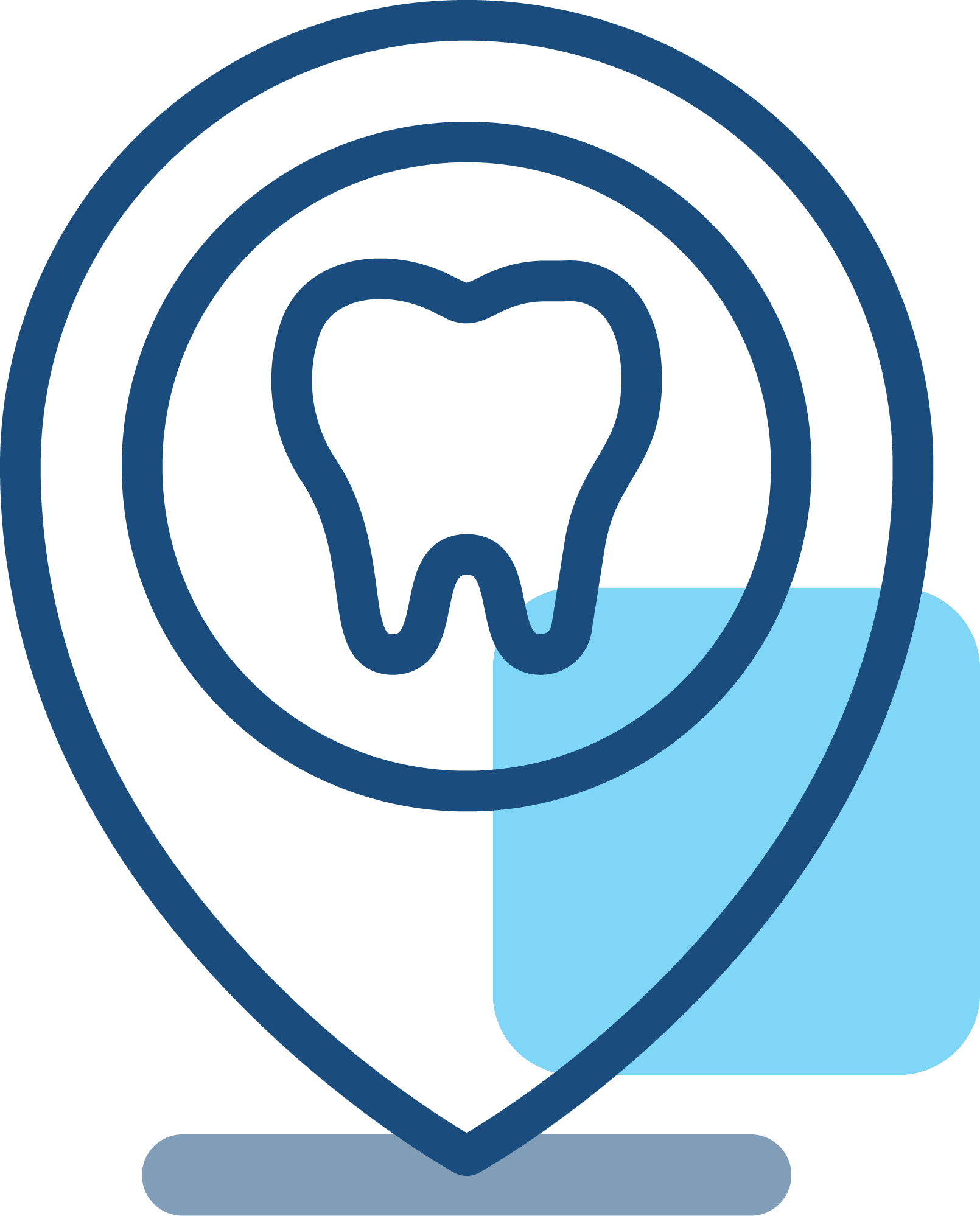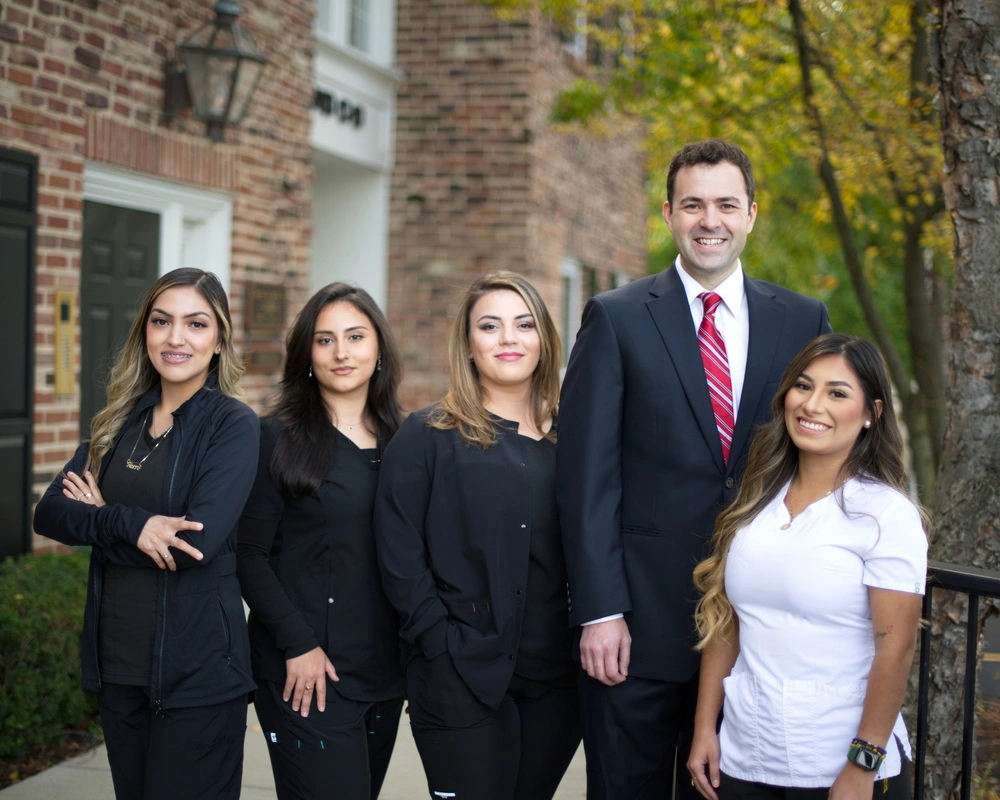In this blog post, we dive into common dental issues that frequently need surgical intervention. From the details of wisdom teeth extraction to the complexities of impacted teeth and the subtleties of torus mandibularis, this exploration provides clarity on treatment options and potential complications. Join us as we break down dental concerns, offering insights into the diverse world of oral surgeries for a comprehensive understanding of these common issues.

Wisdom Teeth Extraction
There is some controversy about when and why to take out wisdom teeth within Dentistry. Management usually depends on recognizing the existence of problems caused by the wisdom teeth.
Clinical data from many scientific investigations has shown that an ASYMPTOMATIC 3rd molar does not mean there is no disease associated with that tooth. But currently prophylactic extraction versus active watching for routine clinical assessment and management is not decided. Even though making a decision can seem simple, the evidence keeping versus pulling the wisdom teeth is not there. Active watching, follow up, reassessment at regular intervals are recommended for 3rd molars, instead of just waiting to see what happens
Some patients with wisdom teeth will develop severe pain, edema, trismus or lockjaw. You may see pericoronitis in an acute stage, cavities, or infection that can spread through the head or neck.
Pericoronitis
Pericoronitis is inflammation of soft tissues around a partially erupted tooth, and it is estimated up to 1/3 of wisdom teeth are pulled because of it.
Dental caries
Cavities can develop in wisdom teeth because of how hard the wisdom teeth are to clean. Some articles estimate that 15% of wisdom tooth extractions are due to cavities.
Infection
Pericoronitis or caries that have killed the nerve of a wisdom tooth can cause a local or spreading space infection in the face, head, and neck. These are potentially life-threatening and fatal infections and have to be treated.
Treatment options
So what can we do with wisdom teeth? Some options include fixing the wisdom tooth, cleaning around the wisdom tooth, or just removing the wisdom tooth.
Every patient should be treated as an individual case. Patient assessments include evaluating their ability to maintain oral hygiene around wisdom teeth, assessing accessibility for dental procedures, considering emergence through the gums, and weighing the potential risk of nerve injury. Importantly, patient preferences are discussed and taken into account.
Some scientific studies have shown that patients that keep their wisdom teeth can have unpredictable changes in periodontal disease, cavities on adjacent teeth, and the impacted teeth may move.
It is not uncommon for asymptomatic wisdom teeth to later need extraction over time. Delaying treatment may cause worsened conditions.
Wisdom teeth can bring about various issues aside from just cavities or gum disease
Teeth that don’t bite against another one may gradually push further out of the gums. Upper wisdom teeth, in particular, often have a tendency to push out more, potentially requiring extractions later on.
Removable Dentures
Wisdom teeth in an area where a denture is placed need about 2 mm of bone to not become irritated. Otherwise there is a risk of irritation, infection, and exposure of the wisdom tooth to the mouth.
Orthodontic indications
Wisdom teeth may need removal for braces if they hinder the second molars’ proper positioning. However, there’s not a lot of scientific evidence confirming that taking out wisdom teeth prevents crowding in the lower front jaw, and it’s not entirely proven by scientific studies.

Impacted wisdom Teeth
Impacted wisdom teeth are 3rd molars in the back of the mouth that don’t have enough room to erupt or develop normally. Wisdom teeth are the last adult teeth to erupt into the mouth. That’s why we call them wisdom teeth! Most people have four total, 2 upper and 2 lower.
Impacted 3rd molars can cause pain, damage to other teeth and other problems. Sometimes the teeth don’t have any active issue, but because they are hard to clean they can get cavities or gum disease. Symptomatic teeth are usually removed, but sometimes teeth that aren’t actively causing issues SHOULD be also removed before they cause issues.
Symptoms of Infected Teeth
Impacted third molars may not always show symptoms. However, if an impacted third molar becomes infected or causes damage to teeth, the following issues may arise:
- Red / Swollen gums
- Tender / Bleeding gums
- Jaw pain
- Swelling of the jaw
- Bad breath
- An unpleasant taste in your mouth
- Difficulty opening your mouth
When should you see a dentist?
If you experience symptoms in the area behind your last molar that could be due to an impacted wisdom tooth, it’s advisable to consult with your dentist. If you are experiencing symptoms, give us a call at (630) 765 7557
What Causes Infected Wisdom Teeth
Wisdom teeth or 3rd molars are impacted because they don’t have enough room to erupt or develop normally. 3rd molars usually erupt between the ages of 17 and 25. Some people develop them without any issues and they line up with their other teeth. But many times the mouth is too small for wisdom teeth to come in normally, and they become trapped.
A wisdom tooth may partially emerge so that some of the crown is visible (we call this partially impacted), or it may never break through the gums (aka fully impacted).
3rd Molars can:
- Grow at an angle toward the second molar
- Grow at an angle toward the back of the jaw
- Grow at a right angle to the other teeth, as if “lying down” within the jawbone
- Grow straight up or down like other teeth but trapped within the jawbone
Potential issues caused by wisdom teeth
Damage to other teeth: If the wisdom tooth pushes against the second molar, it may damage the second molar. This can increase the risk of infection in that area. 3rd molars can create pressure, crowding the other teeth or require orthodontic treatment to straighten other teeth.
Cysts: Teeth develop in a sac within the jawbone. The sac can fill with fluid, making a cyst that can damage the bone, teeth and nerves. Rarely, a tumor usually noncancerous (aka benign) develops. This complication may require removal of jaw tissue and bone.
Decay: Partially impacted wisdom teeth look to be at higher risk of tooth decay (cavities) than other teeth. Probably because wisdom teeth are harder to clean and food and bacteria get easily trapped.
Gum disease: The difficulty cleaning impacted, partially erupted wisdom teeth increases the risk of developing a painful, inflammed gums called pericoronitis in that area.
How to prevent issues caused by wisdom teeth
You cannot prevent an impaction from occurring, but keeping regular six-month dental cleaning and checkups helps your dentist to monitor the growth and emergence of your wisdom teeth. Having routine scheduled dental X-rays may indicate impacted wisdom teeth before any symptoms develop. Contact us to maintain your dental health.

Jaw Surgery – Torus Removal
Torus mandibularis is a type of a bony growth on the floor of your mouth, by your tongue. These growths, also called tori, are not harmful and typically don’t cause pain. You can have mandibular tori on one side or both sides of your jaw. Torus mandibularis generally doesn’t require treatment unless it interferes with chewing, speaking or a denture.
Tori vary in number and size. It can be one growth or several. One can get torus (singular) or tori (plural) on the roof of your mouth, too. These bony growths on the palate are: palatal tori (torus palatinus).
How common is it to develop torus?
Mandibular tori are somewhat uncommon, seen in about 27 out of every 1,000 adults in the United States. Mandibular tori are less common than palatal tori. Also, about 80% of people with mandibular tori have these growths on both sides of their mouth. They’re not harmful or cancerous.
Symptoms and Causes
- One or more bony growths on your lower jaw, by your tongue. (on either side)
- Difficulty chewing or swallowing
- Difficulty getting in dentures and mouth guards
- Food getting stuck around the bony growths
What causes tori in gums?
We don’t really know what causes mandibular tori or why some people are more likely to develop them.
Risk factors for mandibular tori include:
Teeth grinding (Bruxism): Clench or grind your teeth? You might be more likely to have mandibular tori.
Mouth anatomy: The way your teeth fit together, and jaw shape, can have an impact on the presence of dental tori.
Bone density: Higher bone density people may be more likely to have mandibular tori.
Vitamin deficiencies: Some research indicates that a lacking of certain vitamins can contribute to dental tori.
Genetics: You’re more likely to have tori if your family has a history of the them.
Age: People over the age of 30 are more likely to develop them
What are the complications of torus mandibularis?
Though mandibular tori aren’t harmful or cancerous, they can cause complications in some people. These complications may include:
Poor oral hygiene: Tori that are near your teeth make it difficult to brush and floss properly. This can buildup dental plaque and harmful oral bacteria.
Difficulty chewing or swallowing: Large tori can interfere with chewing, eating or swallowing your food.
Speech issues. Sometimes mandibular tori hinder your tongue, resulting in speech difficulty.
Pain or discomfort: If tori grow very large, they can prevent you from closing your mouth completely. The tissue covering the bony growths may also become irritated or inflamed, especially if you wear dentures, mouth guards or other oral appliances.
How are mandibular tori diagnosed?
Dentists diagnose dental tori during examinations. They may take photos of the growths to chart their size and location.
What tests can help diagnose mandibular tori?
You might not need a lot of testing to diagnose mandibular tori. However, your dentist may take a CT (computed tomography) scan to rule out other dental issues.
Mandibular tori management and treatment
You probably won’t need any treatment for mandibular tori unless they cause pain or interfere with function or quality of life. Surgeons can remove mandibular tori with an oral surgery procedure.
Surgical mandibular tori removal
- First local anesthesia to numb your gums. (or sedation as needed.)
- Make an incision (cut) in your gums to the tori.
- Remove tori and any excess bone.
- Close with stitches.
How long is tori removal surgery?
The surgery is usually done in less than an hour.
Complications of mandibular tori removal
- Excessive bleeding
- Infection
- Swelling for more than a few days
- Allergic reaction to anesthesia
How long is the recovery time for tori removal?
It can take four weeks to fully heal after mandibular tori removal, sometimes longer, depending on the size of the growths. But your overall comfort level should start to improve within a week or 2.
You might also ask, “What can I eat after tori removal? After removal, it’s generally recommended to follow a soft or liquid diet to allow the surgical site to heal properly.
During recovery, you should:
- Take all medications prescribed
- Avoid hard and crunchy foods.
- Eat soft foods, such as mashed potatoes, yogurt, pudding, applesauce and pasta
- Use an antibacterial mouthwash daily to help keep the surgical site clean.
Can I prevent mandibular tori?
There’s no way to prevent mandibular tori because it’s not known what causes it in the first place. Let your dentist know if you have bony growths on the floor of your mouth. With early detection, they can keep an eye on the growths and make sure they don’t cause any issues.
Outlook / Prognosis
Most people with mandibular tori don’t need to do anything. Surgical removal isn’t necessary unless the growths interfere with function or your quality of life.
Can mandibular tori shrink?
No, mandibular tori don’t shrink over time. If you tori that causes pain or hinder speech or chewing function, you’ll need oral surgery to remove them.
Can mandibular tori grow back after you remove them?
Unfortunately, mandibular tori can grow back in some cases. Treating any underlying issues, such as grinding or clenching your teeth, can help reduce this likelihood.

Tooth Extractions
Teeth that do not exhibit symptoms or apparent dental issues are termed asymptomatic. In such cases, the possibility of fixing the tooth depends on the nature of the problem.
Treatment Options for Affected Teeth
For teeth in need of intervention, various treatments are available, such as root canal procedures or the application of crowns and fillings.
Surgical Extraction
In certain situations, teeth may be beyond repair, necessitating surgical removal. This is typically recommended for:
- Infection or Periodontal Disease: In cases where infection or gum disease involves the teeth.
- Tooth Decay in Partially Erupted Teeth: Addressing decay in partially erupted teeth.
- Cysts or Tumors Involving the Teeth: Extraction may be required for cases involving cysts or tumors.
- Teeth Causing Damage to Neighboring Teeth: Removal becomes necessary when a tooth is causing harm to adjacent teeth.
The Extraction Process
Extraction is typically performed as an outpatient procedure, allowing patients to return home on the same day. The process involves:
Administration of Anesthesia: Options include local anesthesia, sedation anesthesia, or general anesthesia, depending on the case.
Tooth Removal: The dentist or oral surgeon makes an incision in the gums, removing bone if necessary. After extracting the tooth, the wound is closed with stitches, and the socket is packed with gauze.
Post-Extraction Care: Patients receive instructions for managing post-extraction discomfort, which may include pain, bleeding, and swelling. Techniques such as pain medication and cold compresses are recommended.
Potential Complications
While tooth extractions are generally safe, some individuals may experience less common complications, including:
- Painful Dry Socket: A condition where bone is exposed if the blood clot is lost from the socket.
- Socket Infections: Infections in the socket due to bacteria or trapped food particles.
- Damage to Surrounding Structures: Rare instances of harm to nearby teeth, nerves, jawbone, or sinuses.
By understanding the various aspects of tooth extraction, patients can make informed decisions about their dental care and post-treatment management.

Gum Disease and Surgery
A person may need periodontal surgery to treat certain gum diseases and conditions, such as gingivitis (inflammation of the gums) or periodontitis (inflammation of the bone structure around teeth). This type of surgery is commonly known as gum surgery.
The procedure aims to treat the gum disease and any damage it may have caused by:
- Regrow damaged bones and tissues
- Prevent tooth loss
- Reduce gum gaps between teeth, known as black triangles
- Reshape the jaw bone to lower the risk for bacterial growth in bone crevices eliminating bacteria and infection
What conditions can gum surgery treat?
Periodontal surgery can treat many conditions, including gingivitis. Gum diseases such as gingivitis and periodontitis may require surgery.
Gingivitis is a mild form of disease that can cause gum redness, swelling, and bleeding. Most often, gingivitis occurs due to poor oral hygiene, plaque, and tartar buildup. Professional dental cleanings can reverse this condition.
Periodontitis is a more severe form of gum disease in which gingivitis has worsened and advanced, leading to an inflammatory response that destroys bone and tissues. During this inflammatory process, the gums begin to separate from the teeth. This causes spaces called gum pockets to form, which in turn trap bacteria and lead to infection. As a result, tooth loss or bone damage can occur.
Which kind of surgery a dental surgeon performs depends on the type and severity of the gum disease.
Deep scaling and root plaining
Before surgery, a dental surgeon might give the gums a deep clean. A Deep Cleaning or scaling can remove tartar and bacteria from teeth and gums. Another procedure known as root planing can smooth the surfaces of the roots of the teeth, meaning that there are fewer places for tartar and bacteria to build up. This procedure also removes any tartar that is on the root. Deep scaling and root planing usually is usually performed at the same time.
Flap surgery
Flap surgery is especially helpful for people who have tartar deposits in deep pockets. The procedure involves lifting the gums off of the teeth to remove tartar buildup. After the surgeon has cleaned the area and removed the tartar, the gums are stitched into place to fit around the teeth. Sometimes, the bone will be reshaped during this procedure.
Bone grafting
When the bone that surrounds the root of the tooth is damaged / destroyed, a person may need a bone graft. This procedure involves replacing the damaged bone with new bone. This bone may be the person’s bone, a synthetic bone, or human or animal donor bone. The goal of bone grafting is to hold the tooth in place and help it to regrow.
Guided tissue regeneration
During this procedure, a dental surgeon will place a small piece of material between a person’s bone and gum tissue. The material prevents the gum from growing into space where bone should be, allowing the bone and connective tissue to regrow.
Tissue grafting
The type of surgery performed will be based on several factors, such as the condition of the gums. A receded gum line, known as gum line recession, is caused by the loss of gum tissue and may require soft tissue grafting to reduce the risk of further damage.
During this procedure, a dental surgeon typically obtains tissue from one part of the body and grafts it to the area where the gum has receded. The tissue often comes from the roof of the mouth. Tissue grafting not only reduces the risk for further damage but also covers any exposed roots.
Other treatment options include:
Before any surgery, a dentist will perform a pre-operative exam to make sure it is safe to have surgery.
During this exam, the dentist will likely:
- Take a medical history review and do an exam
- Examine the teeth, mouth, and jaw to check for stability and health
- Check for any infections, abscesses, or other lesions that could make healing from surgery more complicated
- Discuss the risks and benefits of the operation, and receive permission or consent to move forward with the surgery
What happens during surgery
*Most gum surgery procedures take 2 hours to complete.
In some cases, the surgery will require a person to be asleep or partially asleep during the procedure. Other times, the surgery only involves the use of a local anesthetic to numb the gums. The injection of the numbing medication can be mildly uncomfortable.
During the procedure, the dental surgeon uses sterile equipment, including instruments and drapes, to lower the risk of infection.
Cleaning: After small incisions or cuts along the gum line are made, the dentist will lift the gums away from the teeth. This allows the dentist to see the roots better so that they can remove and clean away any tartar, plaque, or infection.
Performing procedures: Following deep cleaning, the dental surgeon can perform other procedures, such as gum reshaping, bone regeneration procedures, or other planned procedures.
Stiching: Once the planned dental surgery is complete, the surgeon will stitch the gums back into place, using fine thread stitches. The dentist will remove the stitches 7 to 10 days after surgery.
Oral surgery recovery
Antiseptic mouthwash may help to prevent infection after surgery. Following any dental procedure, a dentist will provide detailed instructions on how to achieve the best possible recovery. Recovery times will depend on the extent of the procedure taking place
Typically, people will require pain relief medications in the days after gum surgery. Again, the dentist will talk to the person about any recommended drugs before they leave the office or surgical center.
Dentists may also recommend:
- Using an antiseptic mouthwash to keep the area clean and to avoid infection
- Avoiding strenuous exercise
- Eating soft foods in the days following surgery
- No smoking
The dentist will schedule an appointment to return to the office for 1–2 weeks time. During this appointment, the surgeon will check how the gums are healing and, if required, remove any stitches.
A person’s gums look and feel different after surgery. The gums and teeth will heal, tighten, and become firmer and stronger. Some people may have tooth sensitivity to hot or cold temperatures and may find relief by using desensitizing toothpaste.
Dentists will discuss a follow-up schedule to maintain good oral health in the future.
Cost of surgery
Dental procedures may or may not be covered by insurance, so speaking with an insurance carrier to discuss dental benefits is essential in determining expected out-of-pocket costs. Pre estimation helps too. To understand the price of the procedure, give us a call at (630) 765 7557!
How can I prevent gum disease?
Since gum disease is caused by bacterial overgrowth, plaque, and tartar buildup, proper oral hygiene is usually effective in preventing and reversing the condition. In most cases, seeking regular dental care accompanied by brushing and flossing two times a day is enough to prevent gum disease from occurring.
Outlook
In people if left untreated, gum disease may lead to a variety of health problems, such as cardiovascular disease, diabetes, and pre-term, low-birth-weight babies. Gum disease can also become a serious health condition affecting the teeth, gums, and bones, leading to infection and bone and tissue death. This may require extensive surgery to repair and treat the condition.
Reducing risk factors, good oral hygiene, and keeping routine dental appointments can reduce the risk and severity of gum disease.
Conclusion
In closing, our exploration of oral surgeries aimed to shed light on the complexities of common dental issues. From the intricacies of wisdom teeth to the subtleties of torus mandibularis, our journey has underscored the importance of informed decision-making and personalized care. Let’s navigate the path of oral health with clarity, demystifying the challenges that may arise, and fostering a proactive approach to well-informed dental care.




